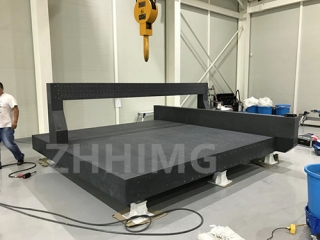Granite is a commonly used material in semiconductor equipment due to its excellent dimensional stability, hardness, and low coefficient of thermal expansion. However, like all materials, granite components are susceptible to wear and potential failure over time. To prevent such failures, it is essential to understand the underlying causes of wear and take proactive measures to prevent damage to the equipment.
One common cause of failure in granite components is mechanical wear. This type of wear can occur due to a variety of factors such as surface roughness, surface topography, and contamination. Prolonged exposure to chemicals and high temperatures can also contribute to mechanical wear. To prevent mechanical wear and prolong the life of granite components, it is important to regularly inspect and maintain the surfaces. The use of protective coatings and regular cleaning can also help mitigate damage caused by chemical exposure.
Thermal fatigue is another common cause of failure in granite components. This type of wear occurs due to a mismatch in thermal expansion coefficients between the granite and adjacent material. Over time, repeated thermal cycling can cause cracks and fractures to occur in the granite. To prevent thermal fatigue, it is essential to select materials with compatible thermal expansion coefficients and to ensure that the equipment operates within a recommended temperature range. Regular thermal inspections can also help to identify potential issues before they cause serious damage.
Another way to prevent failure in granite components is through advanced modeling and simulation techniques. Finite element analysis (FEA) can be used to predict the behavior of granite components under various loading and environmental conditions. By simulating potential failure scenarios, engineers can identify areas of high stress concentration and develop appropriate mitigation strategies. FEA can also be used to optimize component geometries and material properties to improve wear resistance and reduce potential failure.
In conclusion, preventing failure in granite components in semiconductor equipment requires a multifaceted approach. Proper maintenance and cleaning, material selection, and modeling techniques can all help to reduce the risk of wear and damage. By taking a proactive approach to granite component maintenance, semiconductor equipment manufacturers can reduce downtime, save money, and improve overall equipment performance.
Post time: Mar-20-2024

